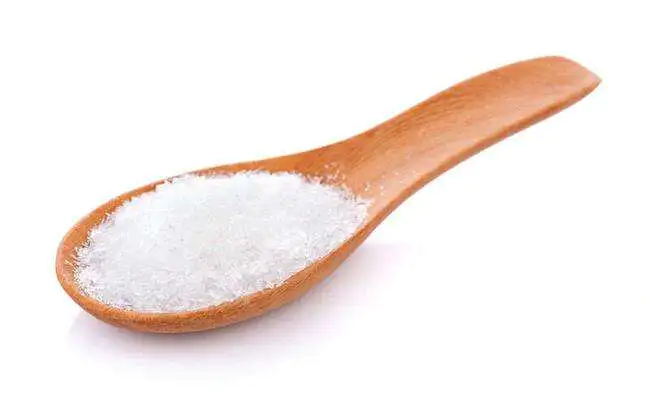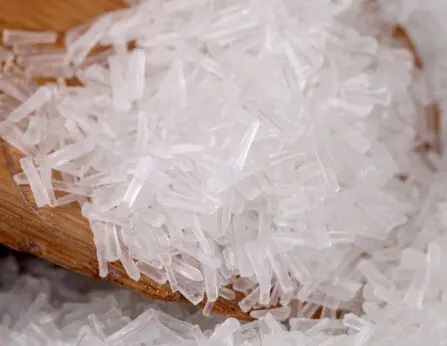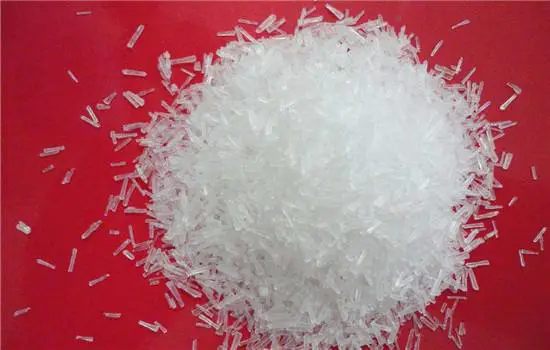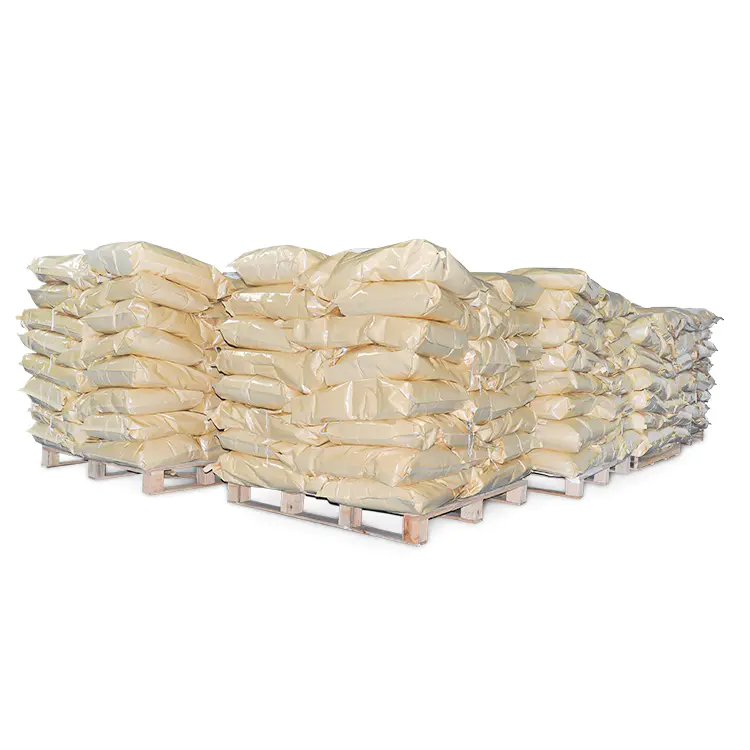




Sodium glutamate (C5H8NNaO4), chemical name α-aminoglutarate monosodium, is the sodium salt of glutamic acid.
Other name: DL-sodium glutamate, monosodium α-aminoglutarate
Chemical formula: C5H8NNaO4
Molecular weight :169.11CAS
Accession No. :142-47-2/32221-81-1
EINECS No.: 205-538-1
Melting point: 225 ℃
Boiling point :333.8 ℃
water-soluble: easily soluble in water
Appearance :white crystalline powder
Flash point :155.7 ℃ application seasoning
Physical and chemical properties
physical properties
Appearance: colorless to white prismatic crystal or white crystalline powder, the aqueous solution is colorless
Melting point: 225℃
Odor: Basically no special odor (taste threshold 0.014%)
Taste: Strong meat umami, slightly sweet or salty
Optical activity: The molecular structure of sodium glutamate contains an asymmetric carbon atom, which has optical activity and can rotate the plane of polarized light by a certain angle
Solubility: easily soluble in water, slightly soluble in ethanol, insoluble in ether
Solubility (water): 10 g/100 mL (cold water), 71.7 g/100 mL (hot water)
chemical properties
Stability: stable to light and heat, the decomposition rate of 10% aqueous solution is about 0.6% when heated at 100℃ for 3h under aeration conditions at pH 6.9. Heating to 120 ℃ dehydration condensation. In an acidic environment, sodium glutamate will produce glutamic acid or glutamic acid hydrochloride; in an alkaline environment, sodium glutamate will chemically react to produce a substance called disodium glutamate.
Application
flavoring agent
When used as a flavoring agent, the general dosage is 0.2% to 0.5%. In addition to being used alone, it is advisable to form a compound seasoning with nucleic acid seasonings such as ribonucleotides and sodium insinuate to improve the effect. Sodium glutamate is the most widely used odorant at home and abroad. It can enhance its taste when coexisting with table salt. When used together with sodium 5'-inosinate or sodium 5'granulate, it is more effective. Effect. my country stipulates that it can be used in various types of food in moderation according to production needs.
Sodium glutamate has a strong umami taste of meat, and monosodium glutamate can still feel umami when diluted with water to 3000 times. The use of sodium guanylate and sodium glutamate at the same time has a synergistic effect and can improve the umami taste, also known as a freshness aid or a strong monosodium glutamate.
Biochemical reagents for medicine
Glutamic acid is widely present in the body of animals and plants, and is a naturally occurring nutrient in food. After glutamate is eaten, 96% is absorbed in the body, and the rest is excreted in the urine after oxidation. Although glutamic acid is not an essential amino acid for the human body, it undergoes transamination with keto acids in nitrogen metabolism and can synthesize other amino acids. Glutamate has the effect of reducing toxins in the blood. When the liver function is damaged, the ammonia content in the blood increases, causing severe nitrogen metabolism disorder, leading to hepatic coma, while glutamate can work with ammonia to reduce the ammonia content in the blood. In addition, brain tissue can only oxidize glutamate, but not other amino acids. When glucose supply is insufficient, glutamine can act as an energy source for brain tissue, so glutamate is necessary to improve and maintain brain function. In addition, it is used in medicine to prevent hepatic coma and prevent epilepsy and can also be used as a brain nutrition agent.
Organic synthesis intermediates
It can be used as an organic synthesis intermediate in industry, but in the world's annual output, this use accounts for a very small proportion, such as used in auxiliary agents, permeable membranes, silk protein modification, leather auxiliary agents, biomedical materials, modification Regenerate collagen fibers and other fields.

